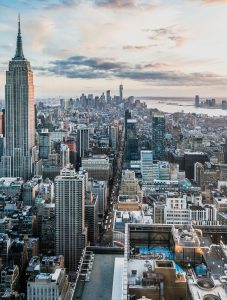This week marked significant growth for the building electrification movement, as the legal pathways in use by local governments to catalyze electrification doubled in number. Previously, local governments had pursued building electrification through building code provisions requiring or incentivizing electrification expressly, or through affirmative “bans” on natural gas hookups to new and renovated buildings. More than 40 local governments in California have taken the former approach, in addition to Seattle, while a much smaller number – three in California plus Brookline, Massachusetts – took the latter. Brookline’s attempt was later struck down by the Massachusetts attorney general.
Building electrification requirements – at times called “natural gas bans,” including on this blog – are subject to a complicated interplay of federal, state and local law, and many local governments have been found or determined themselves to be preempted from one or more approaches. This week’s advancements offer two new models for local governments looking to require or promote building electrification: air pollution and land use regulation.
New York City: On Thursday, May 27, Councilmember Alicka Ampry-Samuel and four of her colleagues introduced Intro. 2317, which would amend the City’s building code to limit greenhouse gas emissions from new and renovated buildings to 50 kilograms of carbon dioxide per million BTUs. The bill represents a twist on the strategy of updating a local building code to require or incentivize electrification: it uses the local building code process but focuses on air emissions. Buildings need not be built all-electric to comply with the code standard – appliances and building systems using any fuels are acceptable – but it will be far easier for them to comply if they do. The New York City bill is tailored to avoid preemption in two main ways. First, by setting an air emissions standard, it limits preemption risk by the U.S. Energy Policy & Conservation Act (EPCA), which prohibits state and local regulations “concerning the energy efficiency, energy use or water use of” many building systems and appliances. Second, by allowing for the continued provision of all forms of fuel, including fossil gas, it steers clear of potential preemption by the New York State public service law’s so-called “obligation to serve,” which declares as New York State policy “the continued provision of… gas, electric and steam service to all residential customers.” It should be noted that New York City has broad local building code authority, while many local governments are preempted by statewide codes. Still, the air emissions standard model could be adapted to apply for jurisdictions without building code authority, including for existing buildings. Intro. 2317 is not yet scheduled for a hearing.
Brookline, Massachusetts: Ten months after Brookline’s 2019 bylaw prohibiting gas connections to new buildings was struck down by the state’s attorney general, members of the local legislative body, Town Meeting, introduced Warrant Articles 25 and 26, two zoning bylaws that provide strong incentives for electrification in new buildings. WA-25 offers a number of incentives to buildings in the Emerald Island special overlay district. The approach parallels other conditions of the overlay district and can be expanded to new zoning overlays in the future. WA-26 is somewhat more novel, and applies to all projects seeking a special permit. Under WA-26, buildings built with fossil fuels will receive special permits that expire in 2030, while buildings built without them (i.e., that are built all-electric) will receive special permits that endure in perpetuity. Special permits are inherently discretionary, and in Brookline no building will be denied one solely on the basis of fossil fuel use. However, a new building will need to transition to non-fossil sources of energy within the next decade. WA-25 and WA-26 are both expressions of Brookline’s longstanding land use authority. Like many other local governments across the country, Brookline is preempted by the statewide building code and other state laws from enacting building construction requirements; however, it is within its authority to make land use determinations, including offering zoning incentives and approving or denying special permits for projects that are otherwise not allowed by the existing zoning code. The warrant articles are consistent with other uses of zoning incentives to induce sustainable building practices and features, and can be used as a model for local governments facing other forms of preemption that may inhibit progress on building electrification. If approved by Town Meeting, the warrant articles will require approval by the Massachusetts attorney general’s office.
Both approaches represent new legal pathways for local governments looking to spur building electrification. By focusing on air pollution and land use controls, areas of longstanding local authority for New York City and Brookline, respectively, these pieces of legislation offer models to local governments around the country whose authority does not allow local amendment of the building code or for other local construction requirements. The Brookline warrant articles sidestep potential building code preemption entirely by offering zoning incentives. The New York City bill also offers a useful model for using air pollution control authority to regulate building emissions. While it does invoke the City’s building code authority, it does not contain any specific requirements for building construction (such as the use of a type of building system) and could be adapted to another context more consistent with a local government’s legal authority to regulate. It is not yet clear whether any of these bills will face challenges in court. Many local governments have found themselves stymied in their efforts to promote building electrification; use of these novel legal pathways may provide a roadmap for new local building electrification programs.
Amy Turner is the Director of the Cities Climate Law Initiative at the Sabin Center for Climate Change Law at Columbia Law School.






